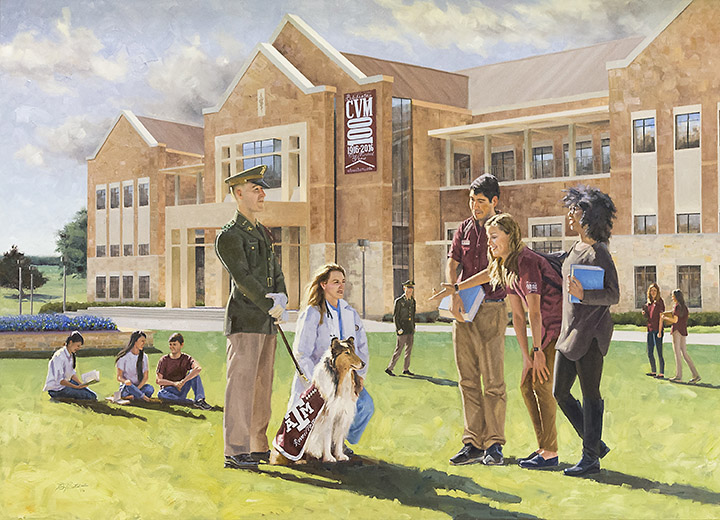

Ranked No. 4 in the US and No. 7 in the world*, t he Texas A&M DVM Professional Program advances the future of veterinary medicine while caring for all animals, large and small, plus the people in their lives and the environments they live in. Our veterinary students benefit from one of the lowest debt-to-income ratios in the country upon graduation, as well as learning at the only veterinary medical teaching hospital in Texas.
For more than 100 years, Texas A&M Veterinary Medicine & Biomedical Sciences (VMBS) has been improving animal, human, and environmental health through teaching, research, veterinary care, service, and outreach.
We are ranked #1 in the Southeastern Conference (SEC), #4 in the United States, and #7 worldwide in veterinary science, according to the 2024 Quacquarelli Symonds (QS) World University Rankings by Subject.
We are one of the largest colleges of veterinary medicine in the U.S., currently training over 700 DVM students each year, with an annual entering class of 180 students. As of May 2023, the VMBS has graduated 8,917 veterinarians.
With world-class clinicians and educators, a modern veterinary curriculum, new and improved facilities, and the support of the Aggie Network, our veterinary students graduate ready to improve the future for animals and the people who love them. When it comes to veterinary excellence, you can’t beat an Aggie veterinarian!

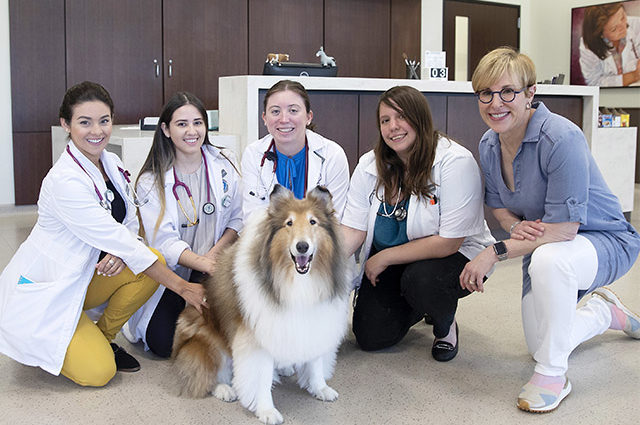

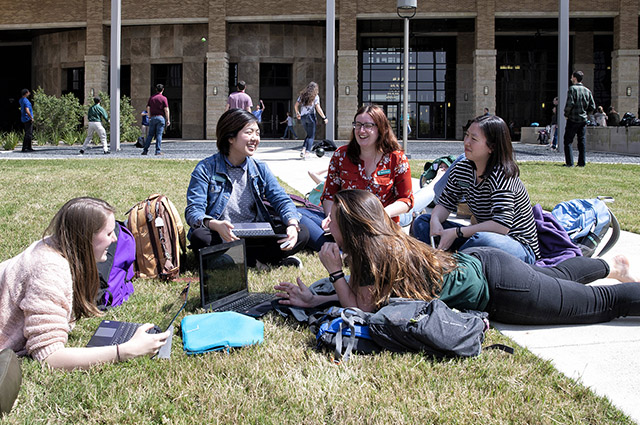
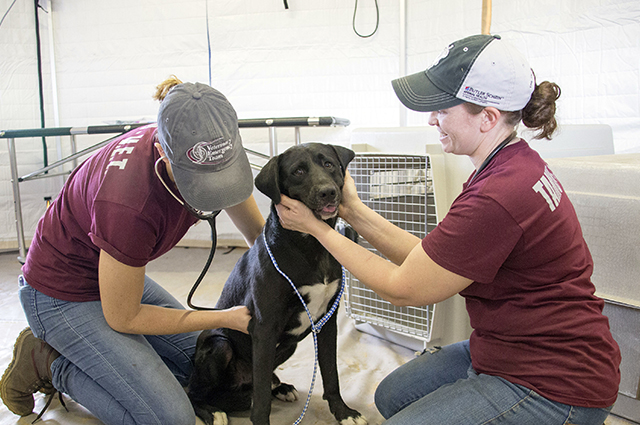
As part of Texas A&M University, the School of Veterinary Medicine & Biomedical Sciences (VMBS) celebrates many traditions designed to unite students, remember fallen Aggies, and demonstrate our core values of Respect, Excellence, Leadership, Loyalty, Integrity, and Selfless Service.
All Texas A&M students, whether undergraduate, graduate, or professional, are members of the Aggie Network and are, therefore, eligible for an Aggie Ring after completing various requirements. The Aggie Ring is easily recognizable and has connected Aggies worldwide. VMBS veterinary students who did not attend Texas A&M for an undergraduate or graduate degree are eligible to apply for their Aggie Ring after earning 45 credit hours at Texas A&M, which falls during their second year of veterinary school.
Texas A&M’s mascot is a female collie named Reveille, often known as the First Lady of Aggieland and the highest-ranking member of the Corps of Cadets. The first Reveille was found by students and brought to campus in 1931, and she has been a beloved aspect of Texas A&M culture ever since. Upon retirement, both Reveille VIII and IX joined the Texas A&M Stevenson Companion Animal Life-Care Center to be car ed for by VMBS faculty, staff, and students.
On April 21 each year, current and former students gather at Reed Arena to honor and celebrate the lives of all Aggies who passed away the previous year during Muster. When a fallen Aggie’s name is called, their family and friends in attendance answer, “Here.” Additional Muster ceremonies also take place around the world on the same date.
In the spring of a veterinary student’s third year, they will receive an official Texas A&M white lab coat to mark their transition from classroom study to clinical work. Each student is invited on stage during this ceremony and presented with a coat by their faculty mentor.
Veterinary students organize and participate in many activities and events throughout the year, including Texas A&M’s Disaster Day —the nation’s largest student-led interprofessional emergency response simulation — and a night of fun and dancing at the annual Fur Ball.
The VMBS also hosts many school-wide events, such as the Dog Bowl Tailgate in the fall and the VMBS Picnic in the spring.
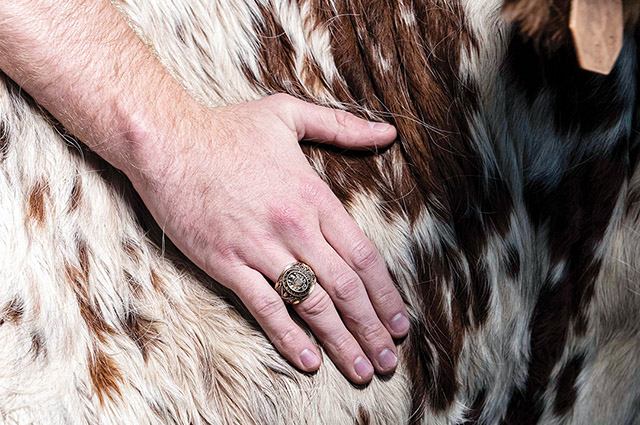

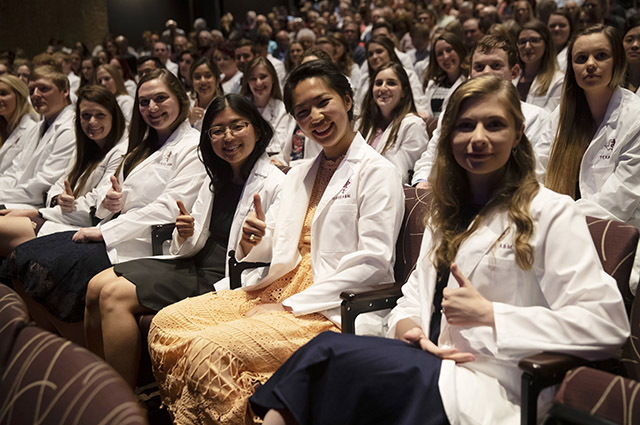
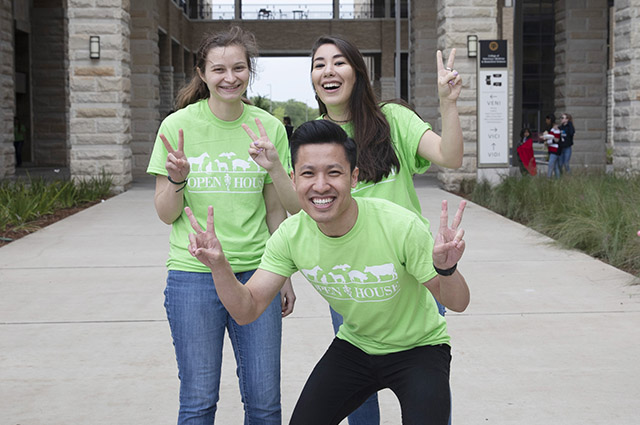
The VMBS has more than 20 official student organizations that unite students based on career goals, interests, or background.
Our Students of the American Veterinary Medical Association (SAVMA) chapter works to support, empower, and inspire all veterinary students in improving their lives, education, and career, along with securing a better future for the profession.
Many veterinary specialties have their own clubs under SAVMA, including animal behavior, equine medicine, internal medicine, pain management, surgery, and zoo, exotics, and wildlife medicine. Other SAVMA clubs cover areas of the veterinary profession and industry, such as business, conservation, and women’s leadership. See a list of all SAVMA clubs on our website.
Many student organizations, such as Aggies Fostering Hope and the Veterinary Response Team, also provide valuable community service opportunities. Others, such as VOICE and Pride VMC, work to enhance the school’s climate and culture initiatives.
Finally, veterinary students may also represent the school through the VMBS Ambassadors and White Coats organizations. Ambassadors serve as the public face of our school by welcoming guests to campus, sharing information with visitors, assisting with special functions, and offering daily tours of our facilities.
Similarly, but with a more internal focus, White Coats work with the DVM Professional Program to represent and promote the VMBS during admissions interviews, orientation, the White Coat Ceremony, graduation, alumni events, and community outreach.
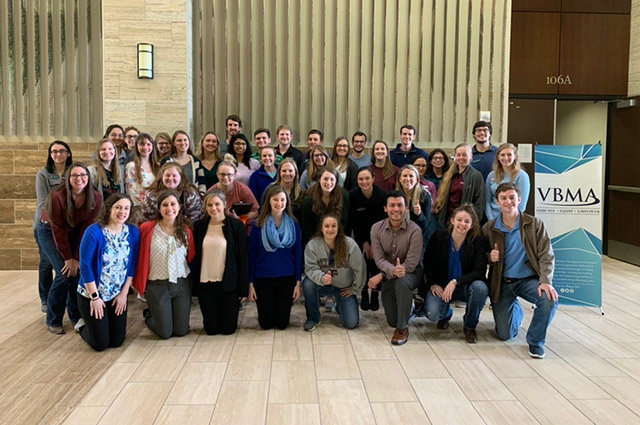 M VBMA chapter poses with a VBMA banner" width="640" height="425" />
M VBMA chapter poses with a VBMA banner" width="640" height="425" />

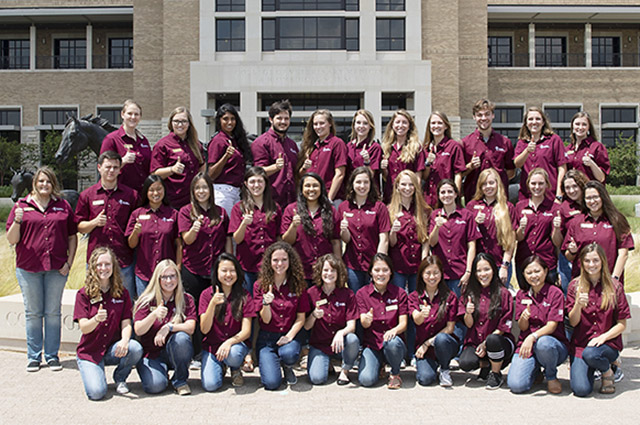
The Veterinary & Biomedical Education Complex (VBEC), which opened in 2016, is a set of three buildings — VENI, VIDI, and VICI — that are designed to provide VMBS students with a world-class veterinary education experience. There are more than 330,000 square feet of classrooms, laboratories, and other learning spaces, plus a large courtyard for outdoor studying — or a fun game of Frisbee between classes.
The VBEC also contains indoor spaces for both group and quiet study, the Vet Med Café and dining area, a Wellness Room for a quick workout between classes, and more.
Also available in the VBEC is the University Health Services (UHS) Counseling at the VMBS office, which offers a relaxation room for veterinary students and personal, academic, and couples counseling.
The VMBS offers several resources to help veterinary students find jobs and externships. We direct veterinary employers from across the country to post open positions on both the HireAggies and the Veterinary Career Network job search platforms. We also host the annual Veterinary Job & Externship Fair to connect employers and students. Veterinary practices from Texas and beyond attend the fair, hoping to recruit future Aggie veterinarians to join their teams.
Finally, when it comes to clinical learning during the fourth year of veterinary school, students rotate through different services at the world-class Texas A&M Veterinary Medical Teaching Hospital (VMTH) while also having the opportunity to complete externships at animal shelters, private practices, and other institutions, including Texas A&M’s Veterinary Education, Research, & Outreach (VERO) program in Canyon, TX.
Fourth-year veterinary students on the community connections rotation may also have the hands-on learning opportunity to assist the Veterinary Emergency Team (VET) in responding to disaster situations across the state.
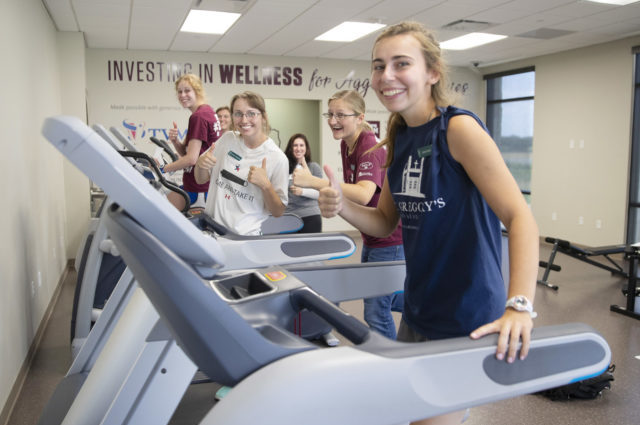
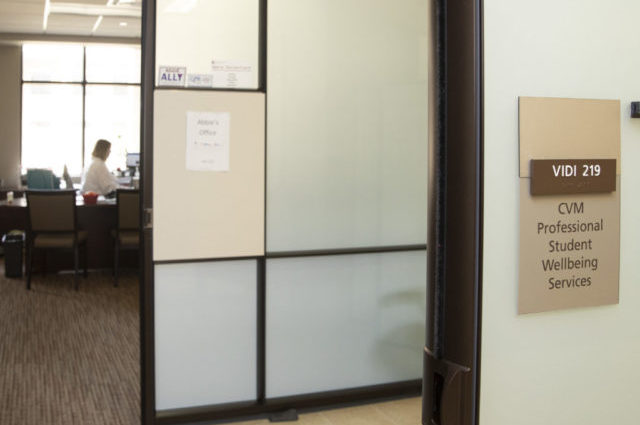
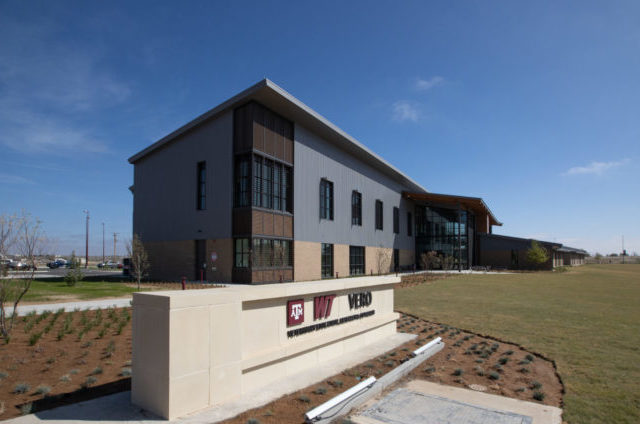
The veterinary curriculum is a four-year program with three years of classroom and laboratory instruction and a final year of clinical rotations, mostly in the VMTH. It’s designed to give future veterinarians a solid foundation in disease recognition and clinical competency.
During the program’s first three years, basic science courses are instructed alongside courses that focus on the professional skills necessary for success as a veterinarian. Learning experiences include didactic lectures, small group discussions, simulation exercises, clinical skills instruction, as well as critical thinking, problem-solving, and communication training.
Students have the opportunity to direct learning toward their career goals by choosing one of five tracks:
In the fourth year, students spend 12 months on clinical rotations in the VMTH, at VERO, with the VET, the Houston SPCA, the Texas Department of Criminal Justice, and on externship experiences at locations of the student’s choice.
The 2+2 DVM Program provides an opportunity to join a small cohort of students who take their first two years at VERO in Canyon, with convenient exposure to livestock and rural veterinary medicine. They take their last two years in College Station with the rest of their class. Indicating a preference for this option is part of the application process.
Two programs at Texas A&M University offer the opportunity to earn a DVM plus another graduate degree. Learn more about the DVM/MS in Veterinary Public Health & Epidemiology (VPHE) and the DVM/MBA combination degree programs.
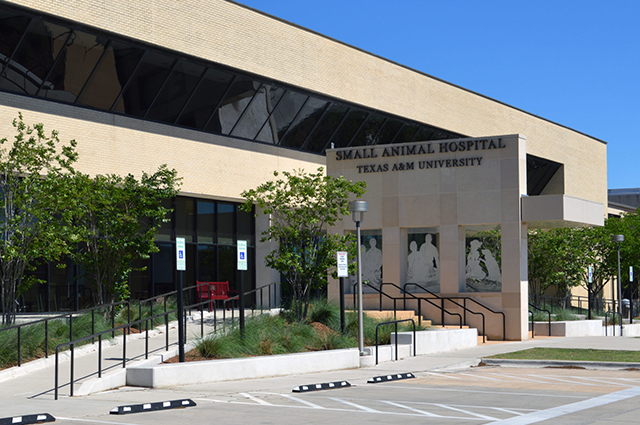

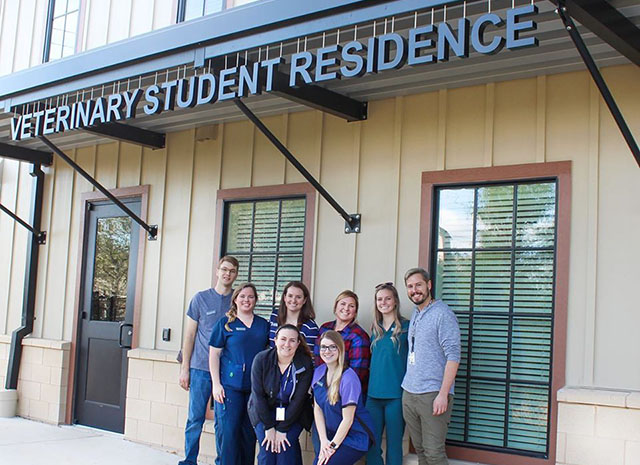
You may have heard that the Aggie family is special — and the smaller VMBS family is, too! C onnect with us to see what sets our school apart from any other school or college of veterinary medicine in North America.
We know that nothing beats touring a place in person! Learn more about your options to visit the VMBS while in Aggieland.
Discover the Veterinary Medical Teaching Hospital (VMTH), our teaching labs, the Veterinary & Biomedical Education Complex (VBEC), or our Research & Graduate Studies (R&GS) programs.